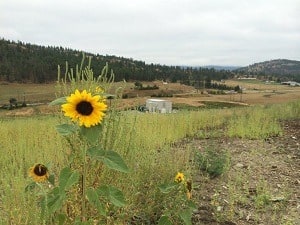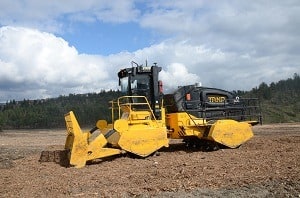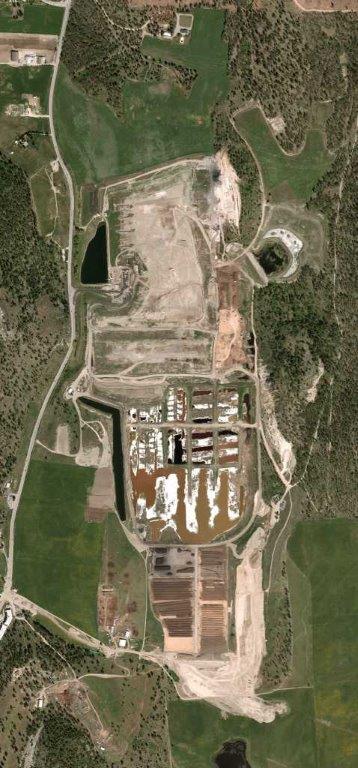By taking giant technological strides, including waste diversion, energy efficient facilities and now implementing a landfill gas plant, the Glenmore Landfill has become one of the more innovative and self-sustaining landfills in the Pacific Northwest.
Kelowna, BC’s Glenmore Landfill opened in 1966 and although its location was on a slough, the idea was to make good use of the property. After many years of operation, through hydrogeological investigation, it was discovered that the ground material was 70 feet of clay, making it the perfect place to put a landfill. Since that time, the Glenmore Landfill has progressed considerably and over the past 10 years, it has taken some giant technological strides, becoming one of the most advanced sites in BC, possibly even one of the more advanced sites in the Pacific Northwest.
The Glenmore Landfill services the communities within the central Okinagan Regional District in British Columbia—a population of about 170,000, in the middle of which is the city of Kelowna, where the landfill is located. Last year, 140,000 people came through the landfill gate, including commercial collectors, curbside collectors and the public—amounting to 171,000 tons of garbage. The community has initiated a three-cart curbside collection program—a cart for garbage, recyclables and yard waste—as well as making accessible three recycling drop-off depots in and around the regional district, one of which is at the landfill. Because glass, plastic bags and styrofoam are not collected at curbside, residents and businesses can drop off those items at the depots.
The landfill has recently focused on investigating uses for landfill gas and re-circulating leachate onsite. In addition, they have just completed rebuilding the facility entrance, transfer station and administrative building, making them very energy efficient with solar heat, geothermal conditioning for heating and cooling, and other energy sensitive initiatives so the operation can exemplify environmental responsibility in everything that is done. “It’s a great organization to be involved with because of the foresight of what has been planned and completed,” says Ken Muller, Glenmore Landfill’s Solid Waste Supervisor, Civic Operations.
Muller points out that one of the most interesting things he’s encountered is that there’s a direct correlation with the economy and amount of tonnage coming in at the landfill. “Between 2000 and 2010, we were experiencing an annual growth of 10 percent in volume in what came in the gate. We had noticed a reduction in tonnage was occurring to change that trend just before talk of the economic downturn began. Now we are starting to see a little bit of an upswing. I think our economy hit bottom, but we seem to be working our way back up. If I could make a prediction based on the garbage coming in, we are starting to see a rebound.”
Facing Challenges
One of the challenges that the Glenmore Landfill faces is the fact that it has no borrow pit for accessing cover material. Muller says they have had to modify the situation by using fibermulch, used for hydroseeding as an alternate daily cover. “Rather than using 6 inches of soil cover at the end of each day for our operation, we are using something that amounts to about a quarter-inch of material. It saves us a considerable amount of airspace over the year. I would recommend using that whether or not you have a cover; it allows more garbage to be squeezed into the landfill.”
Another huge challenge that the landfill is facing is being located on a wetland, because the area has attracted the American Avocet, a rare shore bird in British Columbia, and the landfill has the only nesting colony in the province. Operations will be moving onto their nesting ground in the next 15 to 18 years. Says Muller, “There was no suitable habitat before we began landfilling in that area, but our activity did create an environment conducive to their nesting, so they return annually. Because of the attraction, we are engineering a replacement habitat adjacent to the site. A quarter of a million dollars have been spent on the relocation project so far and we are far from finished.”
Despite those challenges, the Glenmore Landfill has been running smoothly for the last two to three years. They are currently working on Phase I and Phase II of their plan to expand the site and Phase III, about 20 years from now, will rid the landfill of the remaining slew. In addition, the landfill purchased a new TANA compactor last year to help with compaction. “It’s a completely different configuration and concept in landfill compaction and it seems to be working well. The company has been exceptional in handling any problems and getting us up and running. The unit is giving us much better compaction and we burn less fuel because we don’t have to run the unit as much,” says Muller. He points out that with its two-wheel configuration, its two rollers allow them to make a complete pass each time. “We no longer have to drive it eight hours per day. We drive it three hours per day and get a better compaction than what were having with the four-wheel machine. We are getting more airspace and burning less fuel.” Prior to the new compactor, the landfill was consuming 10 percent of the fuel for the whole city fleet. Now, BC has challenged the city of Kelowna to reduce the carbon footprint of the city fleet by 30 percent over 2007 numbers. “It doesn’t matter that we have increased the size of our fleet, the results still has to be the same, so we are looking at ways to minimize fuel usage onsite and this machine has really been instrumental in being able to do that,” says Muller.
Training and Outreach
Safety is one of the main priorities of the Glenmore Landfill and the staff absolutely makes sure that people coming onto the site are oriented with the landfill gas dangers by ensuring that people are not smoking onsite, making sure that they are aware that there is hydrogen sulfide onsite and training staff in procedures for every aspect of the operation. “It’s something that we are consistently looking at for the safety of the staff and public coming in,” says Muller. The landfill’s Joint Occupational Health and Safety Committee also makes recommendations on a monthly basis regarding safety issues to address.
The landfill also does go through basic training programs, basic orientation and staff must become certified for all of the equipment. Even if an employee comes in with equipment experience, he or she must go through the city certification program before becoming certified to be an operator II, III or IV—each of which allows you access to different equipment, but you have to be well-versed and have seat time in it before you get the certification. “It’s something that we focus on daily, ensuring that we have proficient people here. We also go through SWANA for training. I am a MOLO and all ground staff complete British Columbia Qualified Landfill Operator training so that they are well aware of how landfills are supposed to work, what the challenges are and what the dangers are as we go forward doing our jobs,” explains Muller.
The landfill reaches out to the community by providing many club and school, college, university and special interest group tours on a regular basis. “We do try to keep our neighbors informed of issues and changes to our operations that may affect them and we also foster very good relations with the neighboring community associations. We keep them in the loop as we do things and respond quickly if there is an issue that they are experiencing with our site,” stresses Muller.
Innovative Solutions
Muller points out that currently there is so much going on at this landfill, including spending about 15 million dollars on a new entrance road, new administrative facility, new transfer station and new scales. Reserves paid for the improvements and no tax dollars were spent. “There’s so much that we are proud of. We trade clean chipped lumber for hog fuel with a local mill. The lumber is burned in the mill’s waste-to-energy plant. In exchange, they give us hog fuel and we use that for composting biosolid sludge. Of the 35 percent waste diversion the site boasts, much of that is our yard waste and we have a yard waste composting facility here with a windrow system in place where we produce a class A compost sold locally.”
The landfill is also a self-funded organization. Half of their tipping fees go into a reserve, which they relied on when needing to construct a new administrative entrance and facility. “Our reserve is being built back up for closure costs and for capital costs. We run about a $14 million dollar operation per year of which it costs us about $10 million. We are able to put the extra money aside for our required reserve so that we can take care of the issues that are going to come up in the future. Also, when it does come time to implement another waste management option, we should be in good position to do that without having to impose cost on the taxpayers,” says Muller.
Moving Forward
The Glenmore Landfill has also been experimenting in the last 10 years with managing landfill gas, using horizontal collectors. A pilot program was run with three micro turbines for generating electricity onsite; but after being involved in testing for a decade, the City decided on accepting a proposal from Fortis Gas for installing a landfill gas cleansing plant onsite that would pull the methane out and pipe it directly into the natural gas lines as renewable natural gas. Says Muller, “That project is just about to commence—the building is complete, the system is in place, it’s tied into our gas flow field and we are looking to start producing renewable natural gas on a commercial level as we begin the new year. We are hoping down the road to be able to fuel our garbage collection fleet on natural gas and in so doing be able to close the loop. That would be a monumental shift and one that I think everyone is going to appreciate when they see it. That is part of our future plans.”
Despite having the capacity to be in place for another 80 to 100 years under the current conditions, Muller is looking at more and more materials being diverted away from the landfill because of recycling opportunities in the province. “I think it’s going to be a matter of managing this site effectively so that it is an asset for the community in the long run.“
For more information, contact Ken Muller at (250) 469-8792.
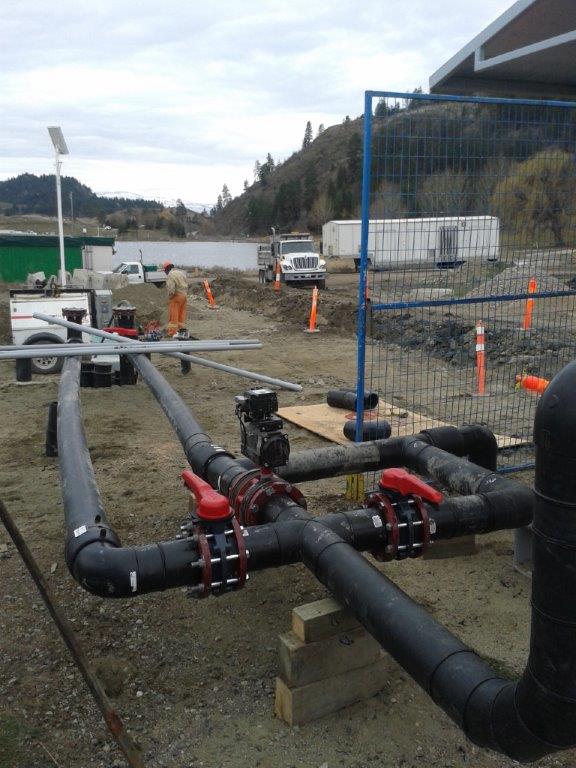
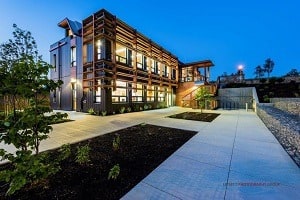
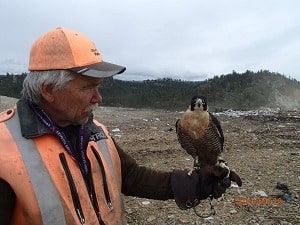
![IMG_0667[5]](https://wasteadvantagemag.com/wp-content/uploads/2014/11/IMG_06675.jpg)

